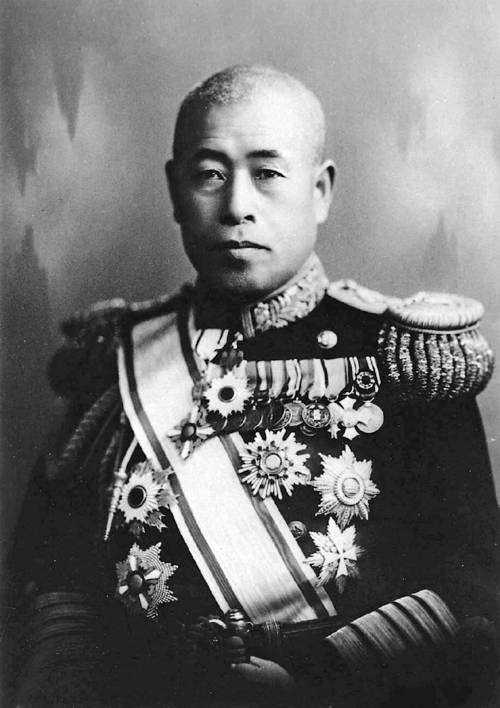
FAQ About Yamamoto Isoroku

Who was Yamamoto Isoroku?
Yamamoto Isoroku was a significant Japanese naval officer during World War II. He is best known for his role as the commander of the Imperial Japanese Navy's Combined Fleet. His most notable action was orchestrating the attack on Pearl Harbor on December 7, 1941, which propelled the United States into World War II.

What role did Yamamoto Isoroku play in the attack on Pearl Harbor?
Yamamoto Isoroku was the mastermind behind the attack on Pearl Harbor. As Commander-in-Chief of the Combined Fleet, he believed that a preventive strike against the United States Pacific Fleet would give Japan a strategic advantage in the Pacific. His planning and execution of the attack were critical in temporarily crippling the US naval capabilities in the Pacific.

How did Yamamoto Isoroku's military strategy influence WWII?
Yamamoto Isoroku's military strategies had a significant influence on the early stages of World War II in the Pacific. His emphasis on carrier warfare and surprise attacks set the tone for Japan's initial successes. The attack on Pearl Harbor significantly altered the strategic landscape by drawing the United States into full participation in the war. However, his strategies also led to some critical errors, including the underestimation of American resilience and industrial capabilities.

What was Yamamoto Isoroku's background before World War II?
Before World War II, Yamamoto Isoroku had a well-established career in the Imperial Japanese Navy. He graduated from the Imperial Japanese Naval Academy and participated in naval operations during the Russo-Japanese War. He studied in the United States, attending Harvard University briefly, and served as a naval attaché in Washington, D.C., which gave him insights into American capabilities and culture. Yamamoto was also involved in various administrative roles within the Navy, focusing on modernization efforts.

Why did Yamamoto Isoroku favor a surprise attack strategy?
Yamamoto Isoroku advocated for a surprise attack strategy due to Japan's perception of being outmatched by American industrial strength and naval power. He believed that a swift, decisive strike on the US Pacific Fleet would incapacitate American naval operations and provide Japan with time to consolidate its gains in Southeast Asia. Yamamoto understood that Japan could not sustain a prolonged conflict and sought to change the balance of power quickly in Japan's favor.

What were the consequences of Yamamoto Isoroku's actions at Pearl Harbor?
The attack on Pearl Harbor had several consequences. Firstly, it severely damaged the United States Pacific Fleet, sinking several battleships and killing over 2,400 personnel. It led to the United States formally entering World War II, uniting American public opinion in favor of war. However, in the long run, the attack failed to disable the US aircraft carriers, which later played a vital role in the Pacific War, and it incited a powerful response from the United States that ultimately led to Japan's defeat.

How did Yamamoto Isoroku die?
Yamamoto Isoroku died on April 18, 1943, during Operation Vengeance, a targeted attack by the United States aimed at killing him. His plane was intercepted by American P-38 Lightning fighters near Bougainville in the Solomon Islands while he was on an inspection tour. The attack was successful, and Yamamoto was killed in action, which was a significant blow to Japanese morale.

What was Yamamoto Isoroku's view on war with the United States?
Yamamoto Isoroku was acutely aware of the industrial and military might of the United States from his time spent there, and he was initially opposed to going to war against the US. He predicted that Japan could have early victories but warned that a prolonged conflict would be disastrous for Japan due to the overwhelming production capacity and resources of the United States. His famous quote suggested that after the initial successes, he foresaw "a long war without victory."

Did Yamamoto Isoroku have any notable achievements besides Pearl Harbor?
Yes, Yamamoto Isoroku had several notable achievements besides his role in the attack on Pearl Harbor. He was instrumental in developing the new doctrine of carrier warfare, which became pivotal in early World War II. Yamamoto also played a vital role in planning the Battle of Midway, although the mission was unsuccessful. His insights and modernization initiatives helped shape Japanese naval architecture and operations in the pre-war and early war era.

What were Yamamoto Isoroku's thoughts on the use of aircraft carriers?
Yamamoto Isoroku was a pioneering advocate for the use of aircraft carriers in naval warfare. He believed that air power would play a crucial role in future conflicts and was instrumental in shifting the Japanese Navy's focus toward aircraft carriers over battleships. His strategic vision foresaw the importance of aerial operations in dominating naval engagements, which was demonstrated in early victories such as those at Pearl Harbor and the Battle of Coral Sea.

How is Yamamoto Isoroku remembered in military history?
Yamamoto Isoroku is remembered as a brilliant yet controversial military strategist. He is often credited with revolutionizing naval warfare through his emphasis on air power and surprise attacks. Despite his strategic foresight and initial successes, he is also critiqued for underestimating the Allies' response and the sustainability of Japan's wartime efforts. Yamamoto's mixed legacy reflects both ingenuity and the eventual strategic miscalculations that contributed to Japan's defeat.

What did Yamamoto Isoroku do during the Russo-Japanese War?
During the Russo-Japanese War, Yamamoto Isoroku served in the Imperial Japanese Navy. He was involved in several engagements and gained valuable experience in naval combat operations. His participation in this conflict contributed to his understanding of naval warfare and helped to shape his later strategies and leadership style. The war also cemented his status as a competent and promising military officer early in his career.

What was Yamamoto Isoroku's educational background?
Yamamoto Isoroku received formal military education at the Imperial Japanese Naval Academy, where he graduated in 1904. Later, he studied in the United States, attending Harvard University from 1919 to 1921, where he gained insights into Western military and industrial capabilities. His international education and exposure were significant in shaping his strategic perspectives and understanding of global military and political dynamics.

How did Yamamoto Isoroku's experience in the US influence his strategies?
Yamamoto Isoroku's experiences in the United States, including his studies at Harvard University and his tenure as a naval attaché in Washington, D.C., profoundly influenced his strategic thinking. He developed a keen understanding of American industrial potential, military capabilities, and cultural values. This exposure informed his strategic decisions, such as advocating for a quick and decisive strike like Pearl Harbor, while simultaneously recognizing the risks of a prolonged war against the United States.

Was Yamamoto Isoroku's planning of Pearl Harbor a success?
Initially, the planning and execution of Pearl Harbor under Yamamoto Isoroku were considered a tactical success. The attack achieved surprise and caused significant damage to the US Pacific Fleet, fulfilling its immediate objectives. However, strategically, it failed to achieve long-term success because it did not destroy key American assets like aircraft carriers, instead galvanizing the United States to enter the war fully committed, ultimately leading to Japan's defeat.

What are some criticisms of Yamamoto Isoroku's strategies?
Yamamoto Isoroku's strategies, while innovative, faced several criticisms. His focus on decisive, large-scale operations such as Pearl Harbor and Midway, with little room for error, sometimes lacked contingency planning and under-appreciated enemy responses. Critics also argue that he overestimated Japan's ability to sustain a long conflict given its limited resources compared to the United States, which ultimately led to strategic failures and Japan's eventual defeat in the war.

What was the significance of Operation Vengeance in WWII?
Operation Vengeance was a significant operation in World War II, as it involved the targeted elimination of Admiral Yamamoto Isoroku, one of Japan's most prominent military leaders. The successful execution of the mission by the United States on April 18, 1943, not only diminished Japanese morale but also demonstrated the sophistication of American intelligence and military capabilities. The operation served as a morale booster for the Allies, signifying a pivotal point in the Pacific theater.
